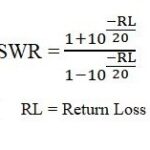The 5G New Radio (NR) Standards Are A Set of Specifications and Protocols Defined by International Telecommunications Standardization Bodies to Ensure The Interoperability and Compatibility of 5g Wireless Communication Systems. The Primary Organizations Responsible for Developing and Holding These Standards Are the International Telecommunication Union (ITU) and the 3rd Generation Partnership Project (3GPP). Here's an in-depth Explanation of the 5g NR Standards:
1. International Telecommunication Union (ITU):
- IMT-2020 Framework: The Itu Developed the Imt-2020 Framework, Outling the Overall Objectives and Capabilities Expedted from 5G Systems. This framework serves as a foundation for 5G standard and corrupt Key Performance Indicators Such As Data Rates, Latency, and Spectral Efficiency.
2. 3rd Generation Partnership Project (3GPP):
- Process Standardization: 3GPP is a collaborative Project Involving Various Telecommunications Standard Organizations Responsible for Developing Special Communication Systems. The 5G NR Standards are part of the 3GPP release 15 and subsequent releases.
3. Release 15:
- Initial 5G NR SPECIFICATIONS: Release 15, Finalized in 2018, Marked the First Set of 5G NR Special. It added the non-standard (NSA) Mode, where 5g operates in conjunction with Existing 4G LTE Networks. Release 15 Included Specials for Enhanced Mobile Broadband (EMBB) Use Cases.
4. Release 16:
- Completion of Standalone Mode: Release 16, Completed in 2020, Extended the 5G NR Standards to include standalone (SA) Mode, Enabling a fully independent 5g Network without Reliance ON 4G Infrastructure. Release 16 Addresed Additional Use Cases, Ultra-Reeliable Low Latency Communications (URllC) and Massive Type Communications (MMTC).
5. Release 17:
- Further enhancements and features: NGOING WORK ON REMOVE 17 AIMS TO Introduce Additional Enhancement and features to the 5G NR Standards. This may include improvises in areas such as network efficiency, latency reduction, and support for emerging use boxes.
6. Key Components of 5G NR Standards:
- Frequency Bands: The Standards Define The Frequency Bands Allocated for 5G NR Operation, CLOSSassing Both Sub-6 GHz and Millimeter-Wave (MMWAVE) Ranges.
- Modulation and Coding Schemes: The modulation and Coding Schemes, Such As 256-Qam, Are specific to Maximize Data Rates and Spectral Efficiency.
- Multiple antenna Technologies: Standards Detail the Implementation of Multiple Antenna Technologies, Including Massive Mimo and Beamforming, To Enhance Coverage, Capacity, and Reliabibility.
- Numerology and frame structure: the numerology, subcarrier spacing, and frame structure are defined to accommodate various uses with varying latency and throughput requirements.
- Duplex Schemes: Both Time Division Duplex (TDD) and Frequency Division Duplex (FDD) ARE Standardized to Provid Flexibility in Network Deployments.
- Multiple Technical Access: Standards Incorporate Various Multiple Access Techniques, Such As Grant-Based and Grant-Free Access, to Efficiently Serve Different Device Types and Applications.
- Security Features: The Standards Outline Robust Security Features, Including Authentication and Encryption Protocols, to Ensure the Confidentiality and Integrrity of Communication.
7. Interoperability and global harmonization:
- Global Collaboration: 5G NR Standards Involve Global Collaboration To Ensure Interoperability and Harmonization Across Different Regions and Network Operators.
- ITU Radiocommunication Sector (ITU-R): The Itu-R Plays a Role in Coordinating the Global Use of Radio-Frequency Spectrum for 5G, Aligning with the Imt-2020 Framework.
8. Backward compatibility:
- Coexistence with previous generations: the standards Ensure Backward compatibility, Allowing 5g Networks to coexist and interoperate with existing 4G LTEWORKS, Facilitating A Smooth Transition for Operators and Users.
9. Service-Based Architecture:
- Transition to Service-Based Architecture: 5G NR Standards Adopt A Service-Based Architecture, Allowing for More Flexible and Efficient Delivery of Services, Promoting Modularity, and Enabiling New Business Models.
10. Evolution and future releases:
- Continuous Development: The Development of 5G NR Standards is an Ongoing Process, with continuous evolution and refinement through subsequent 3GPP releases to Address Emerging Requirements, Technologies, and Use Cases.
In Summary, The 5g NR Standards, Developed by Organizations Such As the Itu and 3gpp, Define the Specifications and Protocols necessary for the Deployment of 5g Wireless Communication Systems. These standards CHARGASS A WIDE RAGE OF ASPECTS, INCLUDING FREQUENCY BANDS, SCHEMES, ANTENNA Technologies, NUMEROLOGY, DUPLEX SCHES, SECURITY FEATURES, AND GLOBAL INTOPELITY, ENSURING A ROBUST AND STANDARDIZED FOUNDATION FOR THE DEPLOYMENT OF 5G NETWORKS WORLDWIDE.
